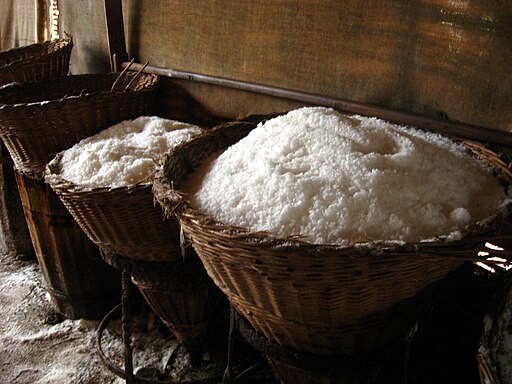Excessive salt intake can damage blood vessels, as well as raising the risk of developing hypertension (high blood pressure), a Dutch population study revealed in the journal Circulation, which belongs to the American Heart Association.
As background information, the authors explained that in people with normal blood pressure, a diet high in salt has virtually no acute effect on blood pressure. However, for reasons which are not fully understood, high sodium (salt) intake over the long-term can lead to hypertension. The researchers, from Harvard Medical School, USA, and the University of Groningen, the Netherlands, hypothesized that those with chronic high salt intakes should have higher levels of serum uric acid and urine albumin excretion; they also hypothesized that for those with these biomarkers of endothelial dysfunction, there would be a higher rate of hypertension.
John P. Forman and team monitored the sodium (salt) intake of 5,556 Dutch adult males and females.
They found that individuals with a high, long-term sodium intake tended to have greater uric acid and albumin levels – both of which are known markers of blood vessel damage.
They detected a close correlation between the risk of developing hypertension and levels of albumin and uric acid.
In an abstract in the journal, the authors concluded:
“Over time, higher sodium intake is associated with increases in serum uric acid (SUA) and urine albumin excretion (UAE). Among individuals with higher SUA and urine UAE, a higher sodium intake is an independent risk factor for developing hypertension.”
Experts from around the world welcomed the study.
Senior Dietician at the British Heart Foundation, Victoria Taylor, said:
“This study reinforces the importance of keeping our salt intake low.
In the UK, the amount of salt we eat on average is above the recommended maximum. The findings are therefore an important reminder to us all about the potential dangers of eating too much salt.
Addressing this issue isn’t just about avoiding the salt shaker at meal times. Most of the salt we eat – about 75 per cent – is already in our foods so we need clear and consistent front-of-pack food labels that will help us to make the healthiest choices.”
Salt (NaCl) consists of two components:
- Sodium (Na) – it is this element that is thought to lead to health problems. 6g of salt contains 2.4g of sodium.
- Chloride (Cl) – this is, in fact, chlorine, but when its electrons bind to the sodium (create a bond), a new compound is created, called sodium chloride (salt) – the chlorine becomes chloride.
Americans on average consume 3,436 mg of sodium per day, the recommended adequate intake level is 1,500 mg
Written by Christian Nordqvist
